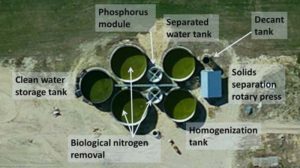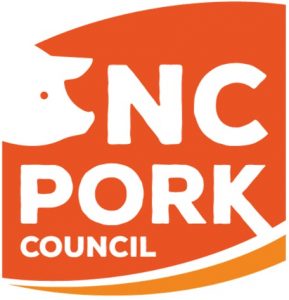We’re not sure if we should laugh or cry at the opinion piece published in the Fayetteville Observer under the name of Billy Richardson of Fayetteville.
Richardson is not only an elected state official. He’s also a lawyer. So it’s no surprise that he would leap at the opportunity to defend the plaintiff attorneys suing our long-standing farming operations here in North Carolina.
We would be surprised, though, if Richardson wrote the opinion piece on his own. That’s because he’s using the exact same arguments, and the exact same words, as the smooth-talking Texas lawyer who has set up shop since April in the Raleigh courtroom.
And while it’s easy to say things in a courtroom or a newspaper column, that doesn’t mean they are right or true — or that they should form the basis for policy proposals that would involve spending millions in taxpayer money.
So let’s start with Richardson’s proposed “solution” to what he believes to be a problem.
“I propose,” Richardson writes, “the state use parts of its ‘rainy day fund’ to pay for half of the cost of covering the lagoons and require Smithfield to pay the other half. … Doing so would give much needed relief to our environment as well as to the folks who live next to these operations.”
To be clear, his proposal is to spend $500 million in taxpayer money and, we suppose, to have Smithfield also intrude on the operation of private farms across the state to spend the other $500 million. Smithfield is in partnership with some farms and owns some others (a fraction), but it should be said that it is certainly not the only game in town. And so, this proposal by Richardson should be viewed less as a serious approach and more as a lever the plaintiffs’ supporters (and Richardson is one) are pulling in their effort to win a settlement just as mediation talks are set to begin. There will surely be more such efforts to come.
If Richardson genuinely wants to spend the state’s reserves of rainy day money in this realm, he should first assist the failing municipal systems that pollute the state’s waters with raw human sewage, week after week after week, with barely a peep from the so-called environmentalists.
Is covering lagoons the answer?
Let’s look at the issue of covering lagoons.
Just like the Texas lawyer, Richardson points to Tom Butler, a Harnett County hog farmer whose farm has covered lagoons.
In Richardson’s telling, Butler “took matters into his own hands” after hearing that he was “harming” his neighbors.
“(Butler) installed lagoon covers and other improvements despite the fact that he got no financial backing from the hog industry,” Richardson writes. “After his lagoons were covered, his neighbors reported to him that it was as though the farm and its odors practically disappeared.”
That’s not what Butler has testified in the courtroom.
The notion that Tom Butler installed lagoon covers on his own is preposterous. Butler’s lagoon covers were paid for and installed by a Pennsylvania company as part of a cap-and-trade carbon credit scheme. Butler and the Pennsylvania company wanted to make money on the deal. Butler put no money in, and was being paid for the maintenance costs and, of course, stood in hope for a share of the carbon credits.
Until it all fell apart.
The carbon market crashed, and the Pennsylvania company went bankrupt or just stopped paying and faded away, though it is unclear exactly which it was, Butler has testified at trial. He’s been dealing with it ever since, trying this or that to make it all work. It’s frustrating, yes, and it’s part of the risk-reward equation that pioneers and innovators take on. We at the North Carolina Pork Council recognized Butler with an award for his efforts, bringing attention to the spirited attempt he and his family took on.
He’s received grants and cost-shares totaling in the high six-figures for various other projects on his farm since, more evidence of his openness to ideas.
But what Butler has said about odor at his farm is important. He has acknowledged that the covered lagoons trap the odor at his barns (and he’s now working on that odor) or push the odor from his lagoon out to the fields closer to the neighbors where he applies his effluent as a fertilizer on a crop. The odor is not magically gobbled up by the cover, he acknowledged.
And he doesn’t have rain falling into his lagoon, and so it is not diluted. No surprise then that Butler believes his farm creates “offensive” hog odor for his neighbors when he applies the undiluted fertilizer on his crops. That’s in contrast to the many hard-working farmers whose neighbors do not report that at all.
Let’s also be clear about the data: the scientific studies here in North Carolina of covered lagoons show no significant difference in regard to odor when compared with traditional, uncovered lagoons.
At 200 meters, for example, a covered lagoon rates a 1.2 to 2.2 on a scale of 0 to 8 for odor. In laymen’s terms, that’s characterized as “very weak” to “weak” odor, with strong odors considered a 6, 7 or 8 on the commonly accepted scale.
What about a traditional, uncovered lagoon at a farm the size of Tom Butler’s? It rates a 1.3 to 2.2 on the same scale at the same distance.
It’s the same, on odor.
This fits with other studies and experiences in regard to odor. The traditional lagoon is simply not what critics like to say it is.
Continuous improvement, always
To be clear, Butler’s outcomes do not mean the industry does not support innovation. We do.
There have been dozens of innovative projects tried and tried again on our hog farms. Those continue to this day. Farmers are willing to try anything, to test anything. We meet, hold conferences, discuss, debate, study and otherwise spend considerable time on the promise of new technologies.
But in the end, new ideas have to be proven to work before others will adopt them widely. That’s why we have 7 covered lagoons in North Carolina, but no more yet.
Back to Richardson’s column. He suggests that Missouri holds an answer.
“Sadly,” he writes, “North Carolina State University has identified superior technology it has deemed operationally and technically feasible, but Smithfield refuses to voluntarily use it. In other states, such as Missouri, they have been forced to adopt superior technology, but not in North Carolina.”
This is another of those red herrings advanced by the Texas lawyers, and Richardson picks it up and goes with it. (He spends lots of time bashing, as well.)
For starters, Missouri is much different than North Carolina. There are only about 10 or so hog farms in Missouri that have covered lagoons — and they are all very large. They have 60,000 to as many as 100,000 hogs on them.
That’s nothing like the average farm in North Carolina. The median size of a North Carolina hog farm is about 3,500 hogs.
Smithfield wasn’t forced to do anything in Missouri, by the way. Another company was — and it went bankrupt. Smithfield has inherited those operations.
Still, to this very day, Smithfield is working to adapt some of the concepts of the Missouri contraptions to here in North Carolina.
But we must take into account that our family farms are much different and much smaller and there are climate and terrain factors involved. All of this takes hard work and innovation – and it’s ongoing as we speak.
It’s much easier for plaintiff lawyers, or their supporters, to point to something somewhere and suggest it belongs here. Newspaper people are especially guilty of this.
But you never see someone ask the people of Iowa or Missouri why they aren’t growing more sweet potatoes, or Christmas trees, or tobacco, like our farmers here in North Carolina do so well, do you?
Since 2000, Smithfield Foods has funded millions in external and internal research to evaluate on-farm technologies in North Carolina.
Those efforts continue though they have not yet identified a workable new technology that would replace the current, scientifically-designed and commonly used treatment system that is on North Carolina farms. The one technology that Richardson and the Texas lawyers point to as a “solution” is a “solids separation” idea that involves a series of tanks and then trucking the solids off the farm. (And yet, trucking has been one of the complaints lodged in the lawsuits.)
It is important to note that much of this research work was overseen by the aforementioned N.C. State University and the evaluation wasn’t just about “operational” and “technical” feasibility. It also rightly took into account “economic” feasibility, something Richardson and the Texas lawyer both conveniently skip over.
A true ‘solution’?

A “solid separation” technology has been funded by Smithfield research but is very expensive to install and operate.
The Texas lawyers know the answer to the economics piece of this. It’s not clear Richardson does, so we’ll extend the benefit of the doubt.
The lawyers bringing the lawsuits acknowledge it would cost “only” about $2 million to install the “technically and operationally feasible” solid separation technology on every hog farm in the state. It’s then another $350,000 a year to operate.
That’s not a typo and that’s not a solution.
Richardson’s “solution” would drive up the cost of food and hurt rural North Carolina farmers — by driving hog farmers out of business.
Smithfield Foods’ subsidiary, Murphy-Brown, owns only a fraction of the farms in North Carolina.
Our farm families own most of the farms.
We simply can’t ask them to place technology on their farms that doesn’t work and would cost them dearly.
To see how eastern North Carolina has reacted to these verdicts, it is more clear now than ever that the communities surrounding and depending on our farms know our farms are run responsibly, with care, and that they are not a nuisance to their neighbors.
To suggest otherwise is to irresponsibly rip a page from the notebook of a Texas lawyer who has been seeking to win money in a courtroom in Raleigh.
— Andy Curliss, CEO

